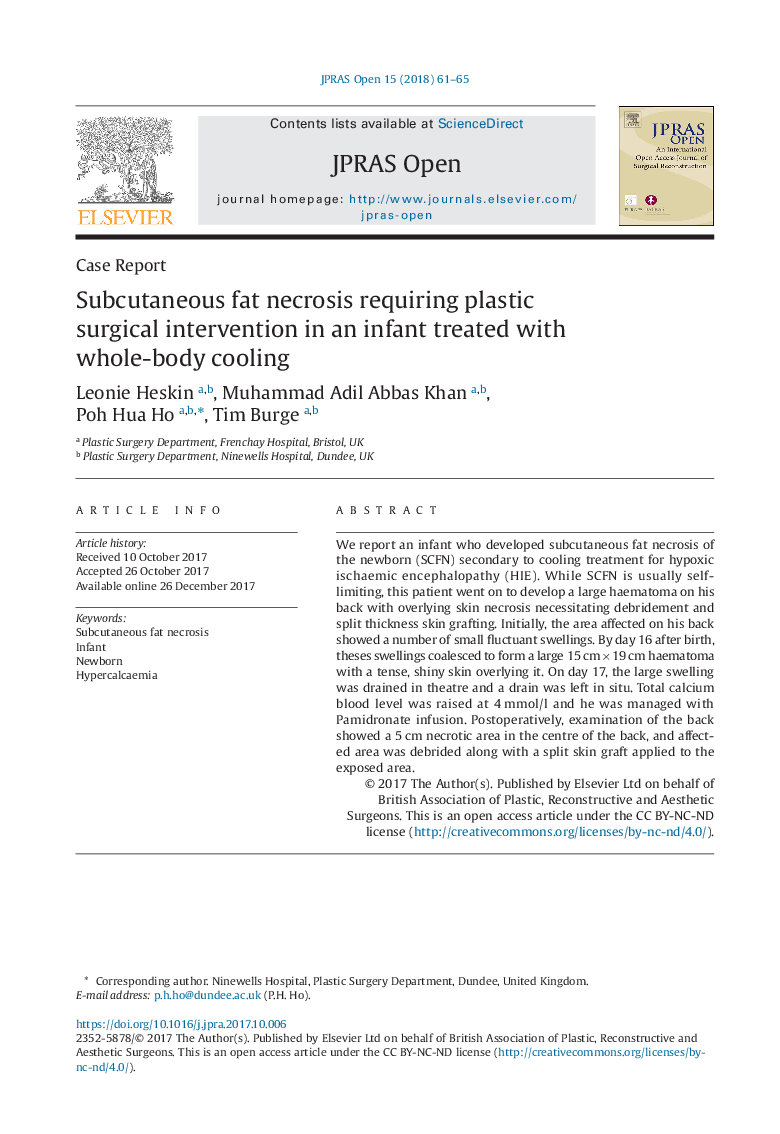| Article ID | Journal | Published Year | Pages | File Type |
|---|---|---|---|---|
| 8836277 | JPRAS Open | 2018 | 5 Pages |
Abstract
We report an infant who developed subcutaneous fat necrosis of the newborn (SCFN) secondary to cooling treatment for hypoxic ischaemic encephalopathy (HIE). While SCFN is usually self-limiting, this patient went on to develop a large haematoma on his back with overlying skin necrosis necessitating debridement and split thickness skin grafting. Initially, the area affected on his back showed a number of small fluctuant swellings. By day 16 after birth, theses swellings coalesced to form a large 15âcmâÃâ19âcm haematoma with a tense, shiny skin overlying it. On day 17, the large swelling was drained in theatre and a drain was left in situ. Total calcium blood level was raised at 4âmmol/l and he was managed with Pamidronate infusion. Postoperatively, examination of the back showed a 5âcm necrotic area in the centre of the back, and affected area was debrided along with a split skin graft applied to the exposed area.
Keywords
Related Topics
Health Sciences
Medicine and Dentistry
Surgery
Authors
Leonie Heskin, Muhammad Adil Abbas Khan, Poh Hua Ho, Tim Burge,
